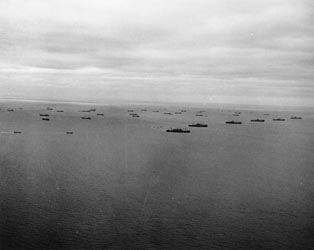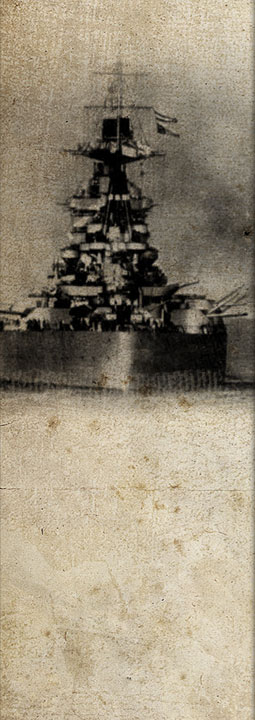
The Invasion Fleet was drawn from eight different navies, comprising 6,939 vessels: 1,213 warships, 4,126 transport vessels (landing ships and landing craft), and 736 ancillary craft and 864 merchant vessels.
The overall commander of the Allied Naval Expeditionary Force, providing close protection and bombardment at the beaches, was Admiral Sir Bertram Ramsay who had been responsible for the planning of the invasion of North Africa in 1942 and one of the two fleets carrying troops for the invasion of Sicily in the following year. The Allied Naval Expeditionary Force was divided into two Naval Task Forces: Western (Rear-Admiral Alan G Kirk) and Eastern (Rear-Admiral Sir Philip Vian – another veteran of the Italian landings).
 The warships provided cover for the transports against any enemy surface warships, submarines or aerial attack, and supported the landings with shore bombardment. These ships included the Allied Task Force "O". A small part of the naval operation was Operation Gambit, when British midget submarines supplied navigation beacons to guide landing craft.
The warships provided cover for the transports against any enemy surface warships, submarines or aerial attack, and supported the landings with shore bombardment. These ships included the Allied Task Force "O". A small part of the naval operation was Operation Gambit, when British midget submarines supplied navigation beacons to guide landing craft.


